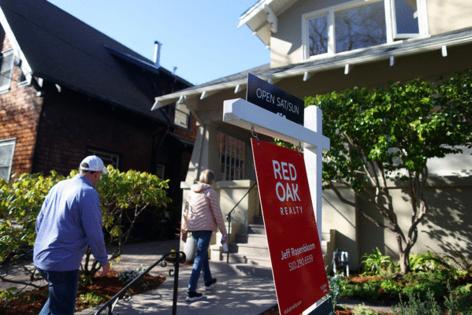Jonathan Levin: Sorry inflation doomers, we're heading in the right direction
Published in Business News
The disinflation process appears to be intact, even if it’s happening in fits and starts.
The Bureau of Labor Statistics reported Wednesday that its core consumer price index rose 0.3% in April from a month earlier, the slowest pace of the year. At the same time, a separate report showed that control-group retail sales — used to calculate gross domestic product — slipped 0.3% in April, a sign the economy may be experiencing some healthy cooling that could ultimately help douse remaining inflation pressures.
While it’s only one month of data, it came at a loaded time for financial markets and policymakers. Three straight months of higher-than-expected inflation at the start of the year caused hand-wringing that the Federal Reserve’s 5.25%-5.5% policy rate may not be high enough to bring supply and demand into better balance. Yields on 10-year Treasury notes had climbed as much as 82 basis point this year, and speculation was mounting — however far-fetched — that policymakers’ next move could be to raise rates, rather than cut them. Wednesday’s data should put the inflation-doom genie back in the bottle for a while.
Together with Tuesday’s producer price index data, the numbers also suggest that the Fed’s preferred inflation gauge — the core personal consumption expenditures deflator — probably increased by 0.247% in April, also slower than any month in the first quarter, according to calculations by Bloomberg Economics. While that sort of month-to-month inflation still isn’t consistent with the Fed’s target (or policymakers’ March forecasts), they will be relieved to see that the trajectory is improving and that the data is no longer delivering large surprises.
Indeed, much of the heat continues to come from idiosyncratic categories with known lags and methodological quirks. Shelter disinflation has been painfully slow to materialize, in part because rental contracts for existing tenants turn over infrequently, and landlords are still enjoying the tailwind from 2021 and 2022. Similarly, auto insurance premiums had been moving up to incorporate the higher costs of vehicles and parts. Most observers can see that these aren’t new inflation pressures, per se, and that they won’t last forever, but many have started to question themselves as the lags have taken longer than originally expected to play out.
Aside from shelter and auto insurance, the other problem categories in recent months are apparel and other personal services, which include haircuts and dry cleaning. These are very small categories that can’t really move the needle on their own, but it’s worth keeping a watchful eye on them for their signaling value. They may be telling us something about businesses’ continued ability to pass on higher prices to consumers. As long as consumer-facing companies have that power, it may indeed be hard to get inflation all-the-way back to the Fed’s 2% inflation target. Then again, softer retail sales data and signs of slower growth in average hourly earnings may mean we’re witnessing the last hurrah for margin-hungry retailers and hairdressers. We’ll have to wait and see.
All in all, the numbers suggest that the inflation doomers got way ahead of themselves in the first quarter. Clearly, that partially explains the rally in stocks and bonds that pushed the S&P 500 Index to an intraday record on Wednesday. Disinflation was just on a hiatus, and while it could take another sabbatical at any time, the confluence of data suggests that we may be turning the page in April. With more disinflation from the big problem categories in the offing later this year, the odds look reasonably good that the rest of 2024 could be marked by continued improvement — and that a rate cut or two is still in the cards.
©2024 Bloomberg L.P. Visit bloomberg.com/opinion. Distributed by Tribune Content Agency, LLC.







Comments